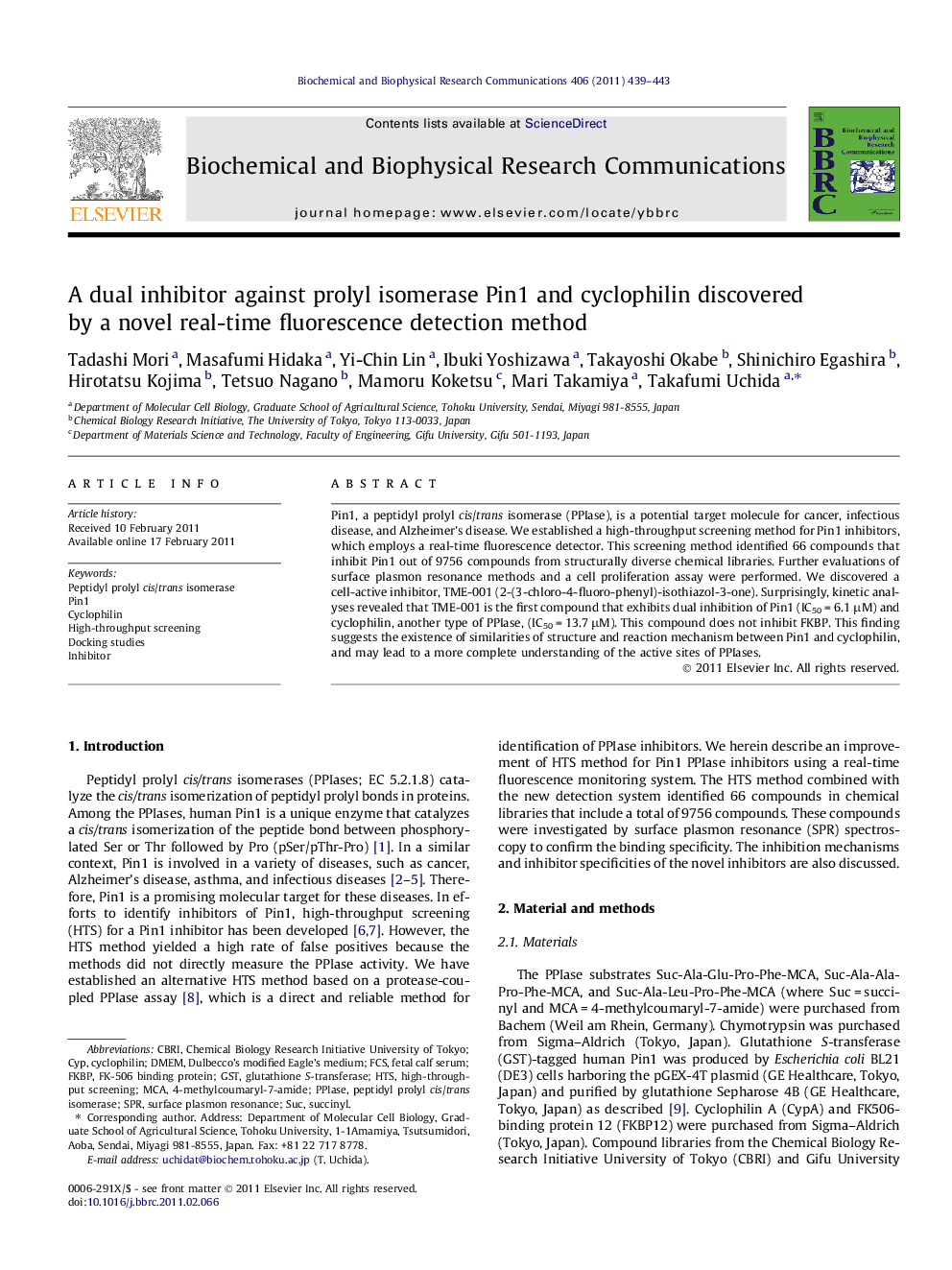| Article ID | Journal | Published Year | Pages | File Type |
|---|---|---|---|---|
| 1930918 | Biochemical and Biophysical Research Communications | 2011 | 5 Pages |
Pin1, a peptidyl prolyl cis/trans isomerase (PPIase), is a potential target molecule for cancer, infectious disease, and Alzheimer’s disease. We established a high-throughput screening method for Pin1 inhibitors, which employs a real-time fluorescence detector. This screening method identified 66 compounds that inhibit Pin1 out of 9756 compounds from structurally diverse chemical libraries. Further evaluations of surface plasmon resonance methods and a cell proliferation assay were performed. We discovered a cell-active inhibitor, TME-001 (2-(3-chloro-4-fluoro-phenyl)-isothiazol-3-one). Surprisingly, kinetic analyses revealed that TME-001 is the first compound that exhibits dual inhibition of Pin1 (IC50 = 6.1 μM) and cyclophilin, another type of PPIase, (IC50 = 13.7 μM). This compound does not inhibit FKBP. This finding suggests the existence of similarities of structure and reaction mechanism between Pin1 and cyclophilin, and may lead to a more complete understanding of the active sites of PPIases.
Research highlights► A Pin1 (prolyl isomerase) inhibitor, TME-001, has been discovered by using a new established high-throughput screening method. ► The TME-001 showed a cell-active inhibition with lower cytotoxic effect than known Pin1 inhibitors. ► Kinetic analyses revealed that the TME-001 is the first compound that exhibits dual inhibition of Pin1 and another type of prolyl isomerase, cyclophilin. ► Thus, similarities of structure and reaction mechanism between Pin1 and cyclophilin are proposed.
